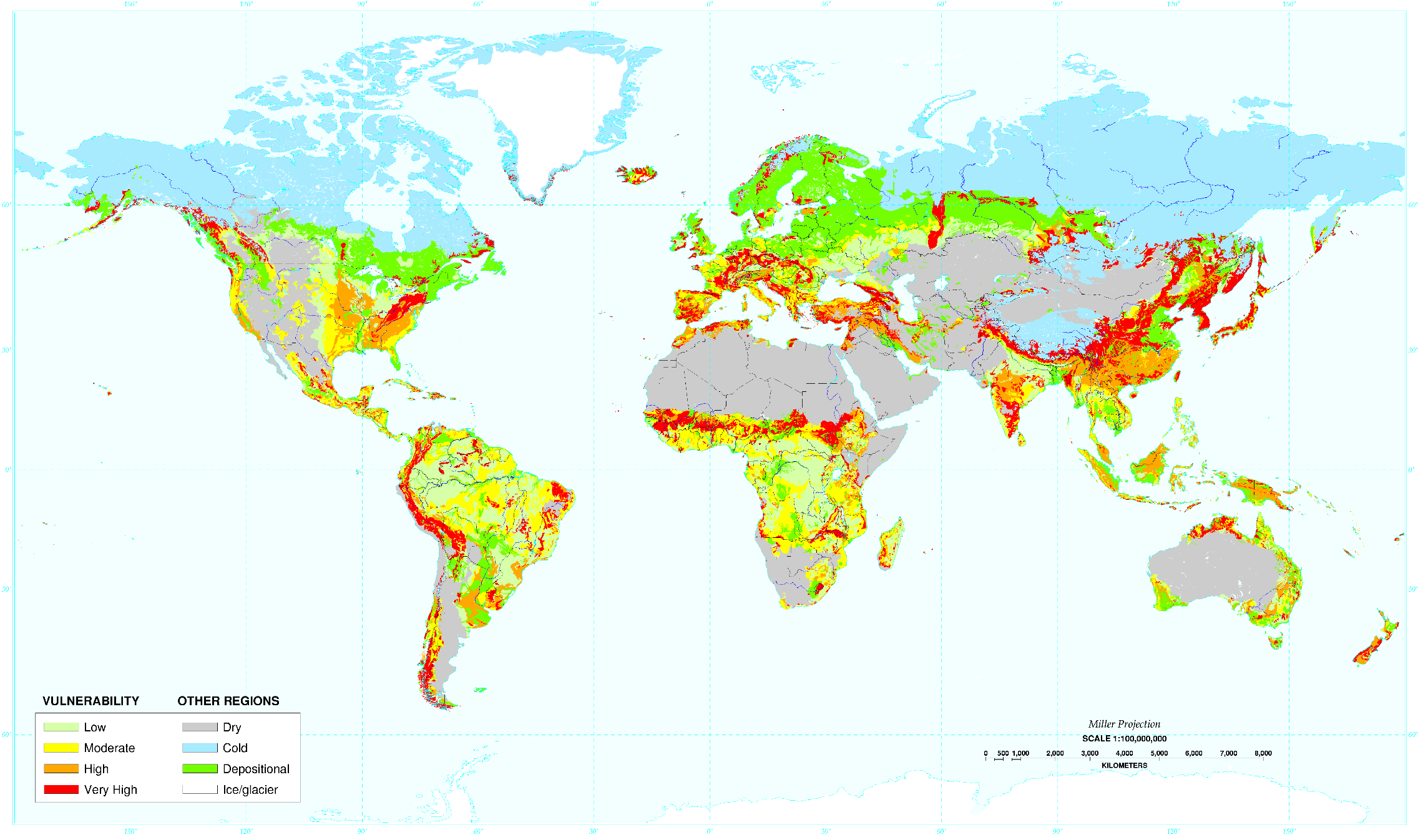| << Chapter < Page | Chapter >> Page > |
Accelerated erosion of topsoil due to human activities and poor agricultural land management is a potentially serious issue. The areas most vulnerable to soil erosion include locations with thin organic (A and O) horizons and hilly terrains (see Figure Water Erosion Vulnerability ).


Some amount of soil erosion is a natural process along sloping areas and/or in areas with soft or noncohesive materials susceptible to movement by water, wind, or gravity. For instance, soil material can be mobilized in strong windstorms, along the banks of rivers, in landslides, or by wave action along coastlines. Yet most topsoil erosion results from water influenced processes such as in rivers, creeks, ravines, small gullies, and overland flow or sheetwash from stormwater runoff. Although some soil erosion is natural, anthropogenic (human-induced) processes have greatly accelerated the erosion rate in many areas. Construction and agriculture are two of the more significant activities in our modern society that have increased erosion rates. In both cases, the erosion of topsoil can be significant if poor land management practices are used or if the area is geologically sensitive. For instance, in the 1930's, drought conditions and poor land management methods (lack of cover crops and rotation) combined to result in severe wind erosion and dust storms in the Great Plains of the United States, which came to be known as the Dust Bowl. Deep plowing of soil and displacement of the original prairie grasses (that once held the soil together) also contributed to the crisis. Once the natural topsoil is eroded by wind or water, it is only slowly renewable to its former pre-eroded condition. It may take anywhere from several decades to hundreds of years to millennia, under replanted native vegetation, to restore the soil to a relatively natural (pre-disturbed) state with its original physical, chemical, and biological characteristics. Furthermore, when soil is eroded, the particles become sedimented downstream in streams, rivers, lakes, and reservoirs. If rapid, this sedimentation can deteriorate the water quality with sediment and agricultural chemicals. Better land management practices, such as more limited tillage or no-till practices, can help to greatly limit soil erosion to a rate that is sustainable over the long term. Practices today are somewhat improved overall, but more improvement in agricultural practices are needed over large areas of farmland in the United States and other countries to bring us on a path to long-term sustainability of agricultural lands.
Deforestation due to logging, construction, or increased fire occurrences can also cause significant increases in soil erosion in many areas globally and may be a particular problem in developing countries. Removal of the natural cover of vegetation enhances erosion since plant foliage tends to buffer the intensity of rainfall and roots hold soil together and prevent breakup and erosion. Furthermore, decomposing plant material provides a protective cover of organic material on the soil surface. Watersheds with large areas of construction or deforestation can experience several times the natural erosion rate. In such watersheds, streams can become clogged with unwanted sediment that disturbs the natural ecosystem and infills valuable wetland areas, in addition to the problem of valuable topsoil loss from upland areas.

Notification Switch
Would you like to follow the 'Sustainability: a comprehensive foundation' conversation and receive update notifications?